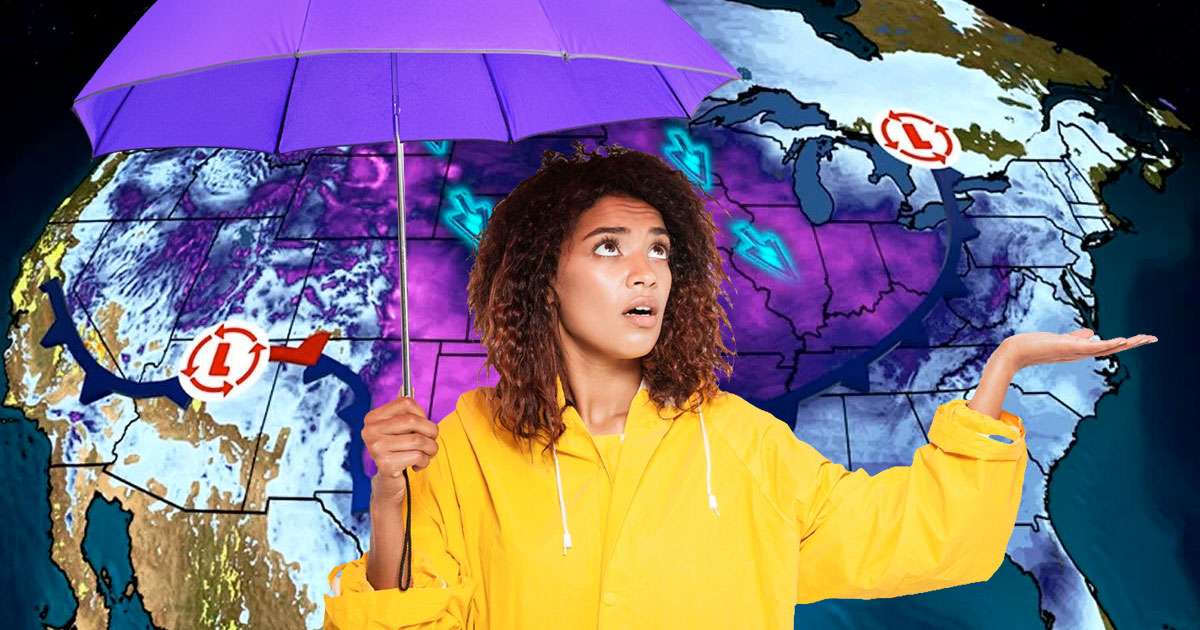Interpreting the Color Purple on Weather Maps: A Guide to Safety and Preparedness

Weather phenomena are a fascinating yet crucial aspect of our everyday lives. They bring about changes in temperature, precipitation, wind, and other atmospheric conditions, impacting everything from our daily plans to agriculture, infrastructure, and the economy. Some weather phenomena can even escalate into natural disasters, causing significant damage and posing a threat to human safety.
It is not only a matter of convenience but also of safety to prepare for these weather events. There could be fatalities, serious injuries, or property damage if these signals are ignored. A study published in the journal “Natural Hazards and Earth System Sciences” emphasizes the importance of institutional vulnerability to natural disasters, including extreme weather events. Another paper from the Wiley Online Library discusses the critical importance of anticipatory adaptation and organizational resilience in responding to impacts of extreme weather events.
Ignoring the risks associated with extreme weather events can lead to a lack of preparedness, potentially exacerbating the damage caused by these events. Therefore, understanding weather phenomena, such as what the colors represent on a weather map, is a crucial part of being prepared for potential natural disasters.
Weather Radar Colors and Their Meanings on a Weather Map
Weather radar, also known as weather surveillance radar, or WSR, is a kind of radar used to track precipitation, determine its velocity, identify the kind of precipitation (rain, snow, hail, etc.), and predict the location and intensity of the precipitation in the future. It’s an essential tool for meteorologists, providing real-time data about weather patterns.
Radio waves from the radar system reflect off of atmospheric particles. The returned signals, or “echoes,” are analyzed to determine the characteristics of precipitation events. Weather maps with color codes are then created using this data.
Different precipitation types and intensities are represented by different colors on a weather map:
Green
This is typically the first color to appear and represents lighter precipitation. On a winter weather map, it may indicate light snowfall.
Yellow and Orange
These colors signify moderate to heavy precipitation. In a thunderstorm, this could mean heavier rain. In winter, it could indicate more intense snowfall.
Red
Red usually indicates very heavy precipitation. In a thunderstorm, this could mean torrential rain or even hail. In winter, it could be heavy snowfall.
Purple
This is usually used to denote extreme conditions. In the context of a thunderstorm, it often indicates very heavy rain or large hail. In winter, it could signify intense snowfall or freezing rain.
Blue
In winter weather maps, blue often represents snow.
Pink
On some winter weather maps, pink can indicate a mix of rain, sleet and snow, or freezing rain.
Remember that these interpretations can change slightly based on the particular weather service and the kind of radar being used. For example, some radar systems use different shades of green, yellow, and red to represent varying precipitation intensities.
The Crucial Significance of Purple in Weather Radar Interpretation
The color purple on a weather radar holds significant importance due to its representation of extreme weather conditions. It’s crucial for meteorologists and the general public to understand what this color signifies, as it often indicates potentially dangerous situations that require immediate attention and appropriate response measures.
In the realm of weather radars, different colors represent varying intensities and types of precipitation. While lighter precipitation is depicted by colors like green and blue, and moderate to heavy precipitation by colors such as yellow, orange, or red, the color purple is reserved for the most severe weather conditions.
In the context of a thunderstorm, purple typically denotes very heavy rain or large hail. Serious risks associated with these conditions include flash flooding, property damage, and potentially fatal situations. In particular, hail can seriously harm automobiles, crops, and buildings.
During winter, the color purple on a weather map often signifies intense snowfall or freezing rain. Heavy snow can lead to road blockages, disrupt transportation, and even cause structural damage due to the weight of accumulated snow. Freezing rain, on the other hand, creates a layer of ice on surfaces, making roads and walkways extremely slippery and hazardous. Both these conditions can result in power outages and pose significant risks to personal safety.
Moreover, purple may also appear in rectangular or trapezoidal boxes during large storms, indicating areas under some form of weather warning or alert. This highlights the necessity of exercising prudence and readiness in those areas.
Actions to Take When the Color Purple is Raised in Your Area
If you find that the color purple has been raised on the weather radar in your area, it signifies extreme weather conditions and calls for immediate action. This alarm indicates very heavy rain, large hail, intense snowfall, or freezing rain, depending on the season. You should take the following actions right away:
Stay Informed
Pay attention to local news, weather forecasts, and alerts from your local weather authority or the National Weather Service. This will provide you information on developments and any instructions that may be required.
Seek Shelter
If you are outside, seek immediate shelter. Severe weather conditions have the potential to be fatal.
Prepare Your Home
If possible, secure your home. For instance, you might need to use sandbags if flooding is a possibility. Verify that your roof can support the weight if significant snowfall is predicted.
Emergency Kit
Have an emergency kit ready. This should include food, water, medications, important documents, flashlights, batteries, and other essentials.
Evacuate if Necessary
In some cases, you might need to evacuate. Follow the instructions from local authorities.
Ignoring a purple alert on the weather radar can lead to significant risks. You may face property damage due to flooding, hail, or heavy snow. Road blockages could leave you stranded, and power outages could leave you without heat or means of communication. In the worst-case scenario, these conditions can be life-threatening.
In conclusion, the color purple on a weather radar is a serious alert that should not be taken lightly. By understanding what this color signifies and taking immediate action, you can significantly reduce the potential risks and protect both yourself and your property.

